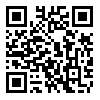Sun, Aug 31, 2025
[Archive]
Volume 9, Issue 3 (5-2018)
Caspian J Intern Med 2018, 9(3): 268-275 |
Back to browse issues page
Download citation:
BibTeX | RIS | EndNote | Medlars | ProCite | Reference Manager | RefWorks
Send citation to:



BibTeX | RIS | EndNote | Medlars | ProCite | Reference Manager | RefWorks
Send citation to:
Akbarpour S, Khalili D, Zeraati H, Mansournia M A, Ramezankhani A, Fotouhi A. Lifestyle patterns in the Iranian population: Self- organizing map application
. Caspian J Intern Med 2018; 9 (3) :268-275
URL: http://caspjim.com/article-1-1257-en.html
URL: http://caspjim.com/article-1-1257-en.html
Samaneh Akbarpour 
 , Davood Khalili
, Davood Khalili 
 , Hojjat Zeraati
, Hojjat Zeraati 
 , Mohammad Ali Mansournia
, Mohammad Ali Mansournia 
 , Araz Ramezankhani
, Araz Ramezankhani 
 , Akbar Fotouhi *
, Akbar Fotouhi * 


 , Davood Khalili
, Davood Khalili 
 , Hojjat Zeraati
, Hojjat Zeraati 
 , Mohammad Ali Mansournia
, Mohammad Ali Mansournia 
 , Araz Ramezankhani
, Araz Ramezankhani 
 , Akbar Fotouhi *
, Akbar Fotouhi * 

Department of Epidemiology and Biostatistics, School of Public Health, Tehran University of Medical Sciences, Tehran, Iran , afotouhi@sina.tums.ac.ir
Abstract: (6644 Views)
Background: The present study evaluated the lifestyle behavior patterns and its associations with demographic factors in the Iranian population.
Methods: A total of 8244 people aged 25-70 years who participated in a national survey in 2011 were included in the study. Factors related to lifestyle (such as diet, physical activity, and tobacco use) have been collected using a questionnaire. A self-organizing map was used for cluster analysis and a multinomial logistic model was used for assessment of associations.
Results: Seven clusters were identified as the following: cluster 1 (15.84%): healthiest lifestyle; cluster 2 (12.45%): excessive consumption of sweet tasting soft drinks, salt, and fast food; cluster 3 (33.73%): no recreational physical activity; cluster 4 (6.86%) alcohol consumption, smoking, and consumption of sweet tasting soft drinks; cluster 5 (14.18%): less salt and oil intake and lack of physical activity; cluster 6 (7.85%): no use of dairy products; cluster 7 (9.08%): the most unhealthy lifestyles; excessive work-related physical activity and smoking and unhealthy diet. Male gender was associated with higher odds of being in clusters 4 and 7. Individuals who were in unhealthy lifestyle clusters were mostly less educated and more self-employed or laborers.
Conclusions: A very small percentage of individuals was in the healthy lifestyle cluster yet they had poor nutrition. Health policy-makers should pay more attention to low recreational physical activity among elder people and in middle-aged and housekeepers, and also to high work-related physical activities that have a strong tendency to be in a cluster with smoking among workers and less educated men.
Methods: A total of 8244 people aged 25-70 years who participated in a national survey in 2011 were included in the study. Factors related to lifestyle (such as diet, physical activity, and tobacco use) have been collected using a questionnaire. A self-organizing map was used for cluster analysis and a multinomial logistic model was used for assessment of associations.
Results: Seven clusters were identified as the following: cluster 1 (15.84%): healthiest lifestyle; cluster 2 (12.45%): excessive consumption of sweet tasting soft drinks, salt, and fast food; cluster 3 (33.73%): no recreational physical activity; cluster 4 (6.86%) alcohol consumption, smoking, and consumption of sweet tasting soft drinks; cluster 5 (14.18%): less salt and oil intake and lack of physical activity; cluster 6 (7.85%): no use of dairy products; cluster 7 (9.08%): the most unhealthy lifestyles; excessive work-related physical activity and smoking and unhealthy diet. Male gender was associated with higher odds of being in clusters 4 and 7. Individuals who were in unhealthy lifestyle clusters were mostly less educated and more self-employed or laborers.
Conclusions: A very small percentage of individuals was in the healthy lifestyle cluster yet they had poor nutrition. Health policy-makers should pay more attention to low recreational physical activity among elder people and in middle-aged and housekeepers, and also to high work-related physical activities that have a strong tendency to be in a cluster with smoking among workers and less educated men.
Policy Brief: Original Article |
Subject:
Health
Received: 2017/10/19 | Accepted: 2018/01/6 | Published: 2018/05/9
Received: 2017/10/19 | Accepted: 2018/01/6 | Published: 2018/05/9
Send email to the article author
| Rights and permissions | |
 |
This work is licensed under a Creative Commons Attribution-NonCommercial 4.0 International License. |




